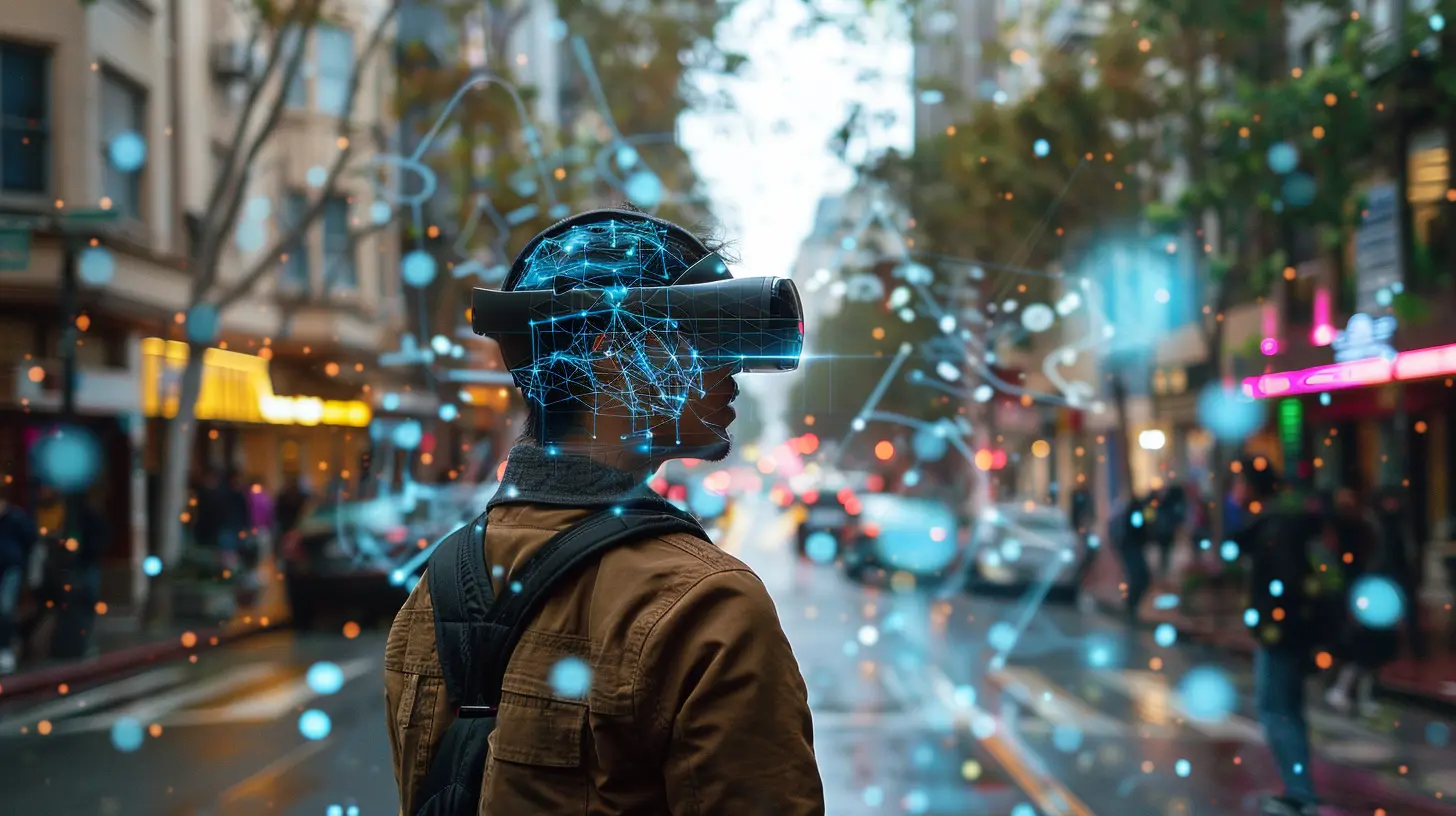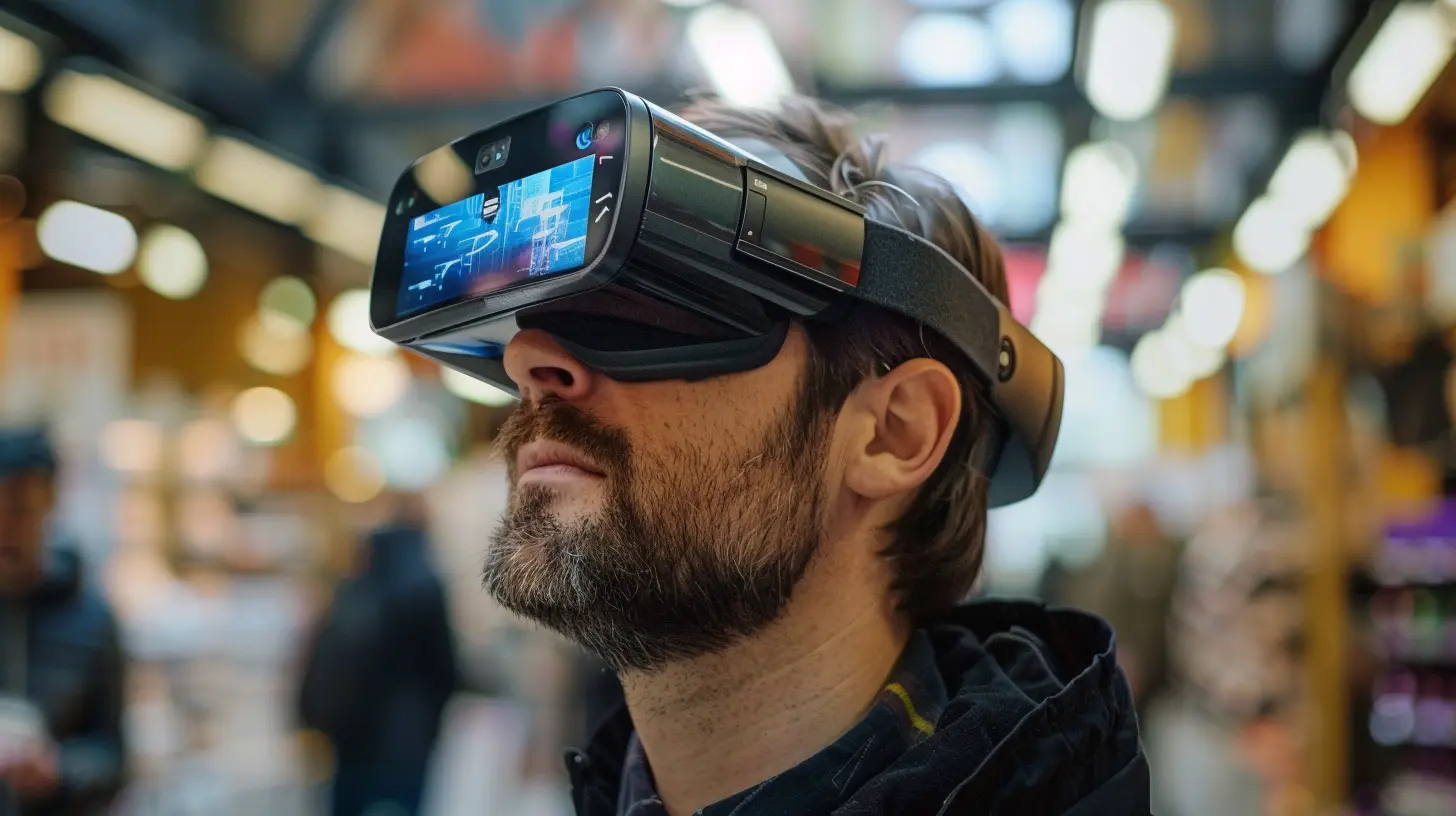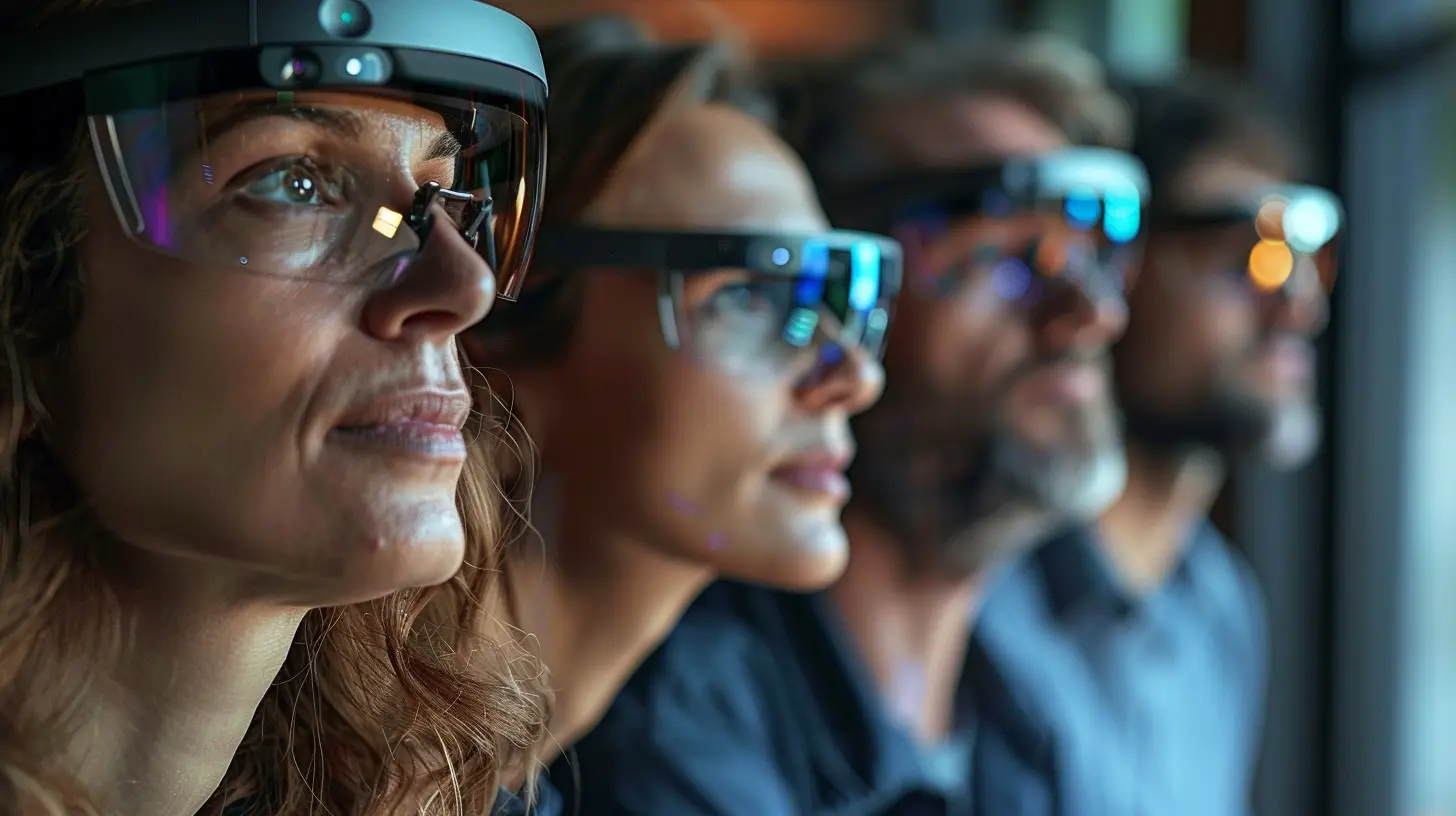The Role of AI in Enhancing Augmented Reality Applications
28 September 2025
Augmented Reality (AR) has come a long way, hasn’t it? From quirky Snapchat filters to full-blown interactive experiences in shopping malls and medical procedures—AR is officially a part of our daily lives. But here’s where it gets even cooler: Artificial Intelligence (AI) is now taking AR to the next level. These two technologies are like peanut butter and jelly—great apart, but phenomenal together.
In this post, we're going to dive deep into the role AI plays in boosting AR experiences. We’ll cover everything from smart object recognition to jaw-dropping real-time personalization. So buckle up, because we’re heading into a world where machines truly understand the world around us—your world.
What Is Augmented Reality (AR) Anyway?
Alright, quick refresher. Augmented Reality is tech that overlays digital information—images, sounds, even smells (yes, that's a thing!)—onto the real world. Think Pokémon GO letting you catch Pikachu in your backyard or IKEA's app showing you how that new bookshelf would look in your living room. It blurs the line between digital and physical, creating a hybrid world.But here's the catch—without some serious brains behind the scenes, AR can feel stale or confusing. That’s where AI swoops in like a superhero.
AI + AR: A Match Made in Tech Heaven
Let’s clear something up—AR is the "what," and AI is the "how." AI gives AR the intelligence it needs to understand surroundings, make decisions, and respond in real time. The combo results in smarter, more interactive, and more personalized experiences.So, what exactly can AI do for AR? A lot, trust me.
1. Smarter Object Recognition and Tracking
Imagine this: You're using an AR app in a museum. Without AI, the app might recognize a painting only if you scan it from one perfect angle. Not super helpful, right? But with AI-powered computer vision, the app instantly recognizes the painting from different angles, distances, lighting conditions—you name it.AI’s object recognition capabilities are like giving eyes and a brain to your AR app. It can identify people, products, signs, and almost any real-world object with accuracy. Then, AR takes over to overlay relevant content.
Real-World Example:
Retail apps are now using AI-enhanced AR to let users “try on” clothes virtually, adjusting the fit and size based on body type detected by AI. Pretty neat, huh?
2. Real-Time Scene Understanding
AR without context is just… digital noise. For AR to be truly immersive, it has to “understand” the environment it's working in. With AI, especially deep learning techniques, AR apps can analyze surroundings in real time—like identifying surfaces, obstacles, and lighting conditions.You’re not just placing a virtual couch in the room—you’re placing it in a spot the AI knows is empty, level, well-lit, and makes the most sense visually. That’s the kind of intelligence we’re talking about.
Think About This:
Ever used a game that places 3D characters in your living room? That character stays balanced on the floor or sofa because AI helps the AR engine figure out where those physical surfaces are.3. Personalized User Experiences
Personalization is the name of the game. AI crunches data—your preferences, past behavior, location—and tailors AR interactions to YOU. That means not everyone gets the same experience, and that’s a good thing.Whether it’s recommending products as you walk through a store or making educational content adapt to your learning pace, AI ensures the AR experience feels custom-crafted.
Fun Fact:
Some makeup brands offer AR mirrors that analyze your skin using AI and suggest makeup shades that fit your complexion—talk about shopping smart.4. Enhancing AR Navigation Systems
You ever feel like GPS is just not enough when you’re inside a mall or an airport? Enter AI-enhanced AR navigation. These systems don’t just read maps—they analyze surrounding signs, recognize shops, and offer arrows and instructions right over your real-world view.AI works behind the scenes to figure out where you are and the best way to get where you're going. It’s like Google Maps with a sixth sense.
5. AI Brings Voice and Gesture Recognition
What if you could just talk or wave at your AR app to get it to do stuff? That’s where Natural Language Processing (NLP) and gesture recognition come in. AI gives AR interfaces the ability to understand your voice commands and body movements.This feature makes AR more accessible and just… easier to use. Because let’s face it—nobody wants to fumble through menus when they can just say, “Show me nearby coffee shops.”
Case in Point:
Microsoft HoloLens uses voice commands and hand gestures to interact with virtual elements—allowing for hands-free operations in everything from surgery to construction.6. Predictive Capabilities and Learning Patterns
Here’s some sci-fi for you: AI can make AR apps that anticipate what you might want to do next. Based on your actions and data, AI algorithms learn and evolve. So, let’s say you’re using an AR cooking app—it might start suggesting recipes based on the ingredients you usually have or techniques you prefer.That's not just smart, that's eerily intuitive. And it's all thanks to machine learning models that feed off your behavior like a Netflix recommendation engine on steroids.
7. Boosting AR in Healthcare
Now let’s get serious. AI-driven AR is doing amazing things in healthcare. Surgeons can wear AR headsets that display real-time data and 3D models during operations, all powered by AI analytics.Even training medical students is easier—AR simulations adapt to each student’s learning curve using AI insights. This isn’t just helping doctors—it’s saving lives.
8. AI’s Role in AR Content Creation
Creating high-quality AR content used to be a massive headache. But with AI, you can automate parts of the process like 3D object creation, animation, and even scriptwriting for scenarios.AI tools are now helping developers generate realistic digital twins, smart avatars, and dynamic environments with minimal manual input. Content that would take weeks to build can now be done in days—sometimes hours.
9. Real-Time Translation and Language Processing
Ever point your camera at a sign in a foreign language and see it magically turn into English? That’s AI-driven AR in action. Apps like Google Lens are using AI to recognize text in real-time and translate it right before your eyes.For travelers, students, or just curious minds, this feature makes the world more accessible. And it’s only going to get better as NLP models evolve.
Challenges and Limitations
Let’s not get too starry-eyed—there are still challenges. AI models require massive amounts of data and computing power. Privacy is a big concern too. Blending AI and AR responsibly means considering how data is collected, stored, and used.Also, there's the ever-present issue of bias in AI algorithms. If not handled correctly, this could lead to AR experiences that are less inclusive or even misleading.
So yeah, there’s work to be done. But the potential? Huge.
The Future of AI and AR Together
Picture this: AR glasses that analyze your mood, health stats, and social surroundings to offer helpful hints or alerts—like reminding you to hydrate or suggesting conversation starters in a networking event.Or imagine virtual tutors that adapt in real time to your learning style, using AR to walk you through complex scientific concepts or historical battles.
As 5G and edge computing get better, and AI becomes more efficient, we’ll see AR applications that feel almost magical.
Final Thoughts
The marriage of AI and AR is one of the most exciting tech revolutions of our time. AI brings the brains; AR brings the beauty. Together, they’re creating experiences that are not just engaging but are changing how we work, play, learn, and even heal.So next time you fire up an AR app, remember—there’s probably an AI engine quietly working behind the scenes, making the magic happen.
And trust me, we’re just scratching the surface.
all images in this post were generated using AI tools
Category:
Artificial IntelligenceAuthor:

Jerry Graham
Discussion
rate this article
1 comments
Nancy Barker
This article effectively highlights the synergy between AI and augmented reality, emphasizing how AI algorithms enhance user experiences through personalized interactions and real-time data processing. The potential for immersive applications in various industries is promising, paving the way for innovative developments.
October 1, 2025 at 4:09 AM

Jerry Graham
Thank you for your insightful comment! I'm glad you found the synergy between AI and augmented reality compelling, as it truly opens up exciting possibilities across different industries.


